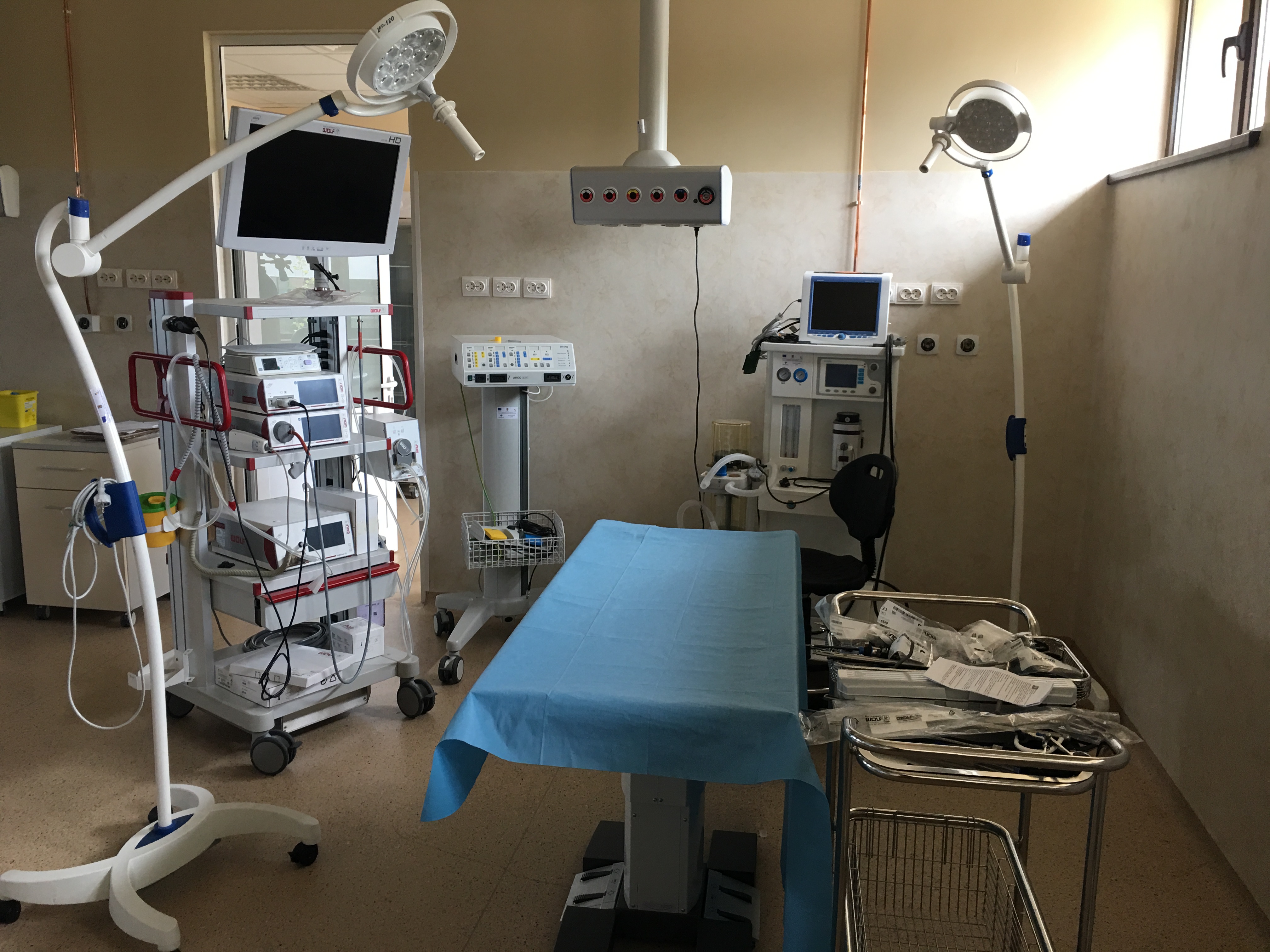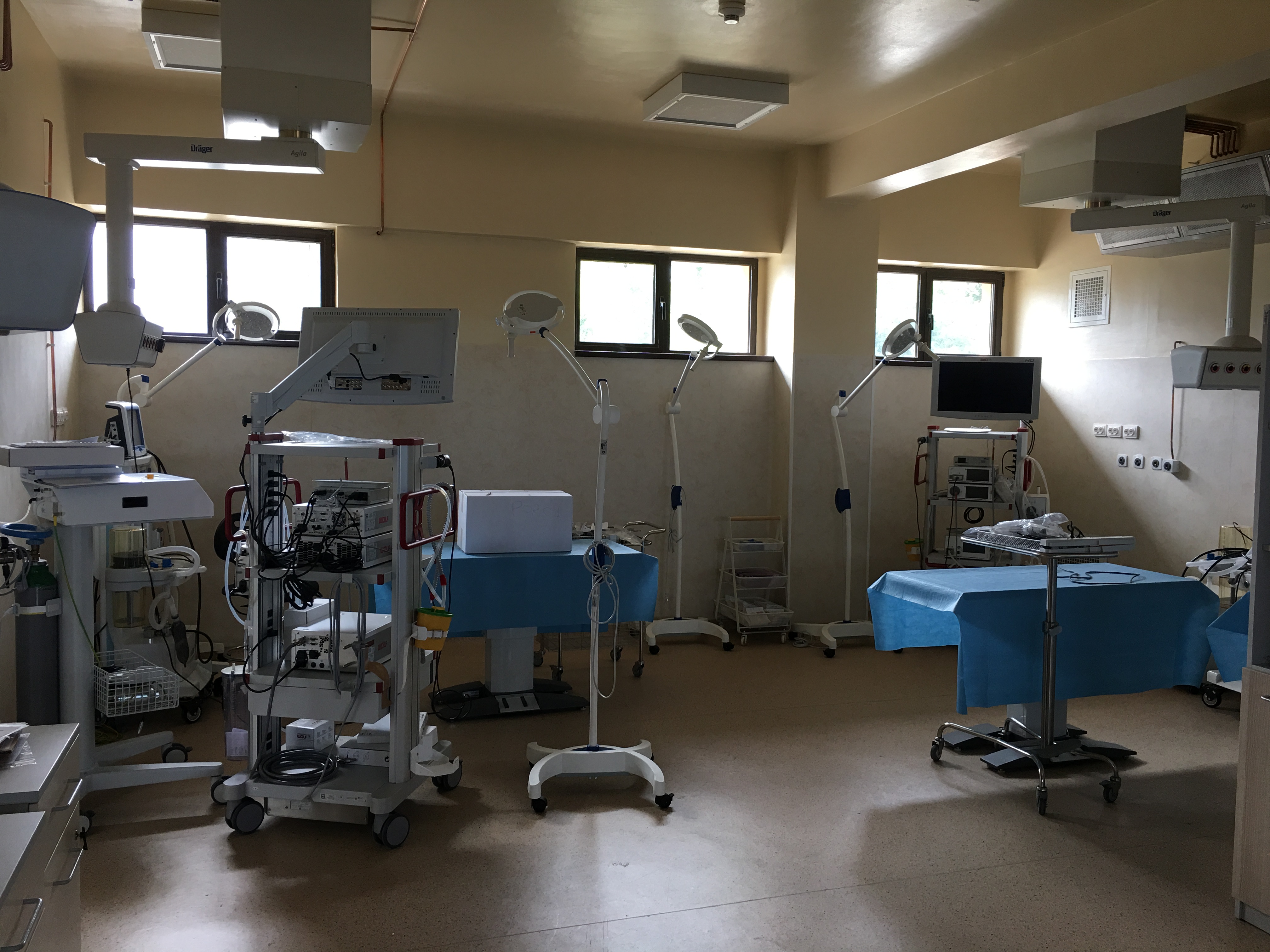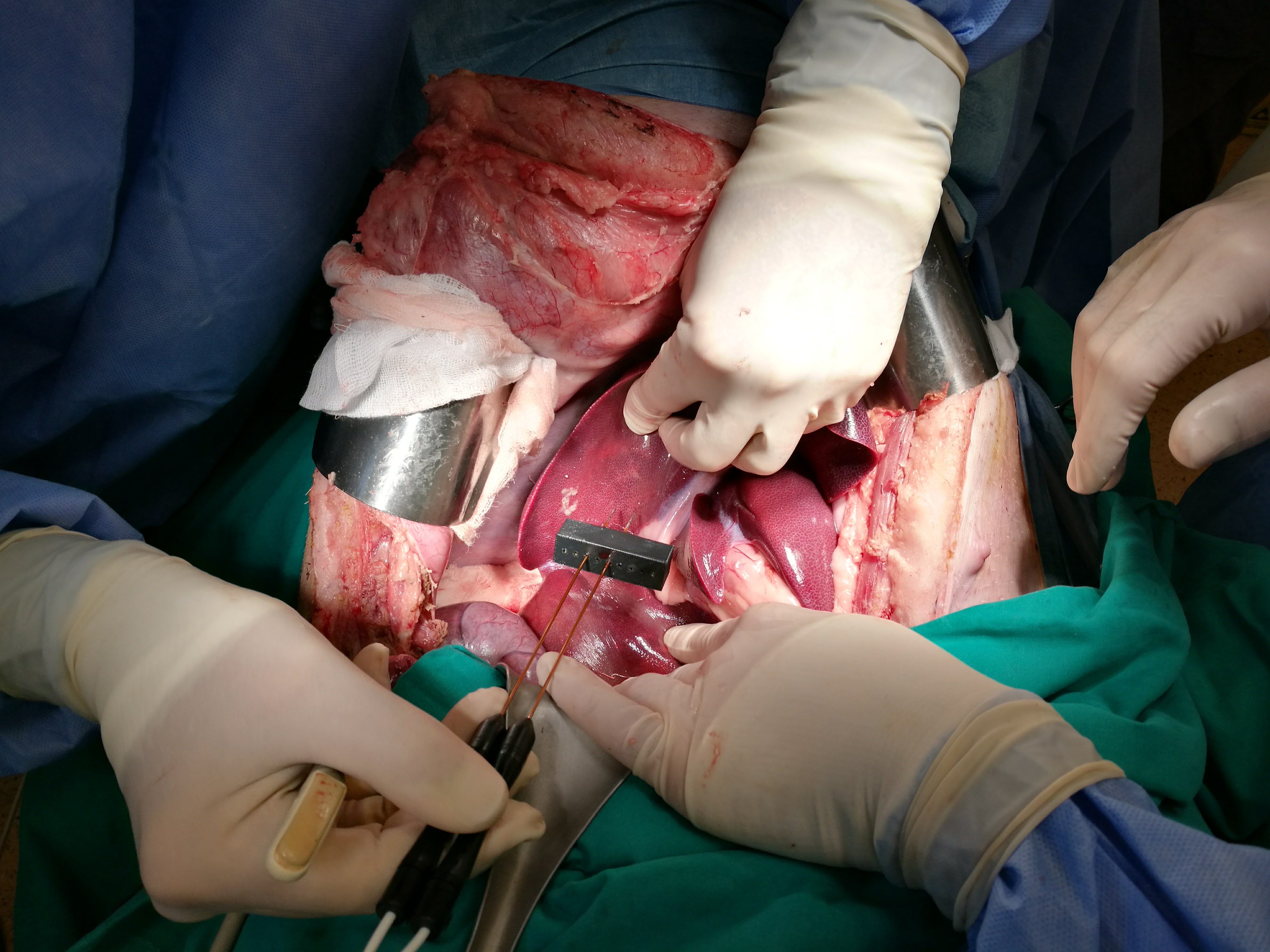The Surgical Experimental Laboratory and the Simulation Center is conceived for training residents, specialists and senior surgeons in the latest minimally invasive and open surgical techniques, continuing education for practicing surgeons, and providing core lab support for pre-clinical research. As a certified facility, we ensure all procedures are in compliance with international and national guidelines.
The experimental lab is a comprehensive resource for surgical learning with activities that support continuing medical education (CME) organizations and the biomedical industry.
The two operating rooms are configurable to handle up to 8 training stations. The lab includes three video stations for hands-on, basic and laparoscopic skills training.

Evaluation of new surgical techniques – Classical, minimally invasive, transplantation surgery and their applicability in human medicine – Conducting basic surgical techniques for residents of all surgical specialties;
Organize at least 6 courses of minimally invasive surgical techniques every year (basic and advanced techniques) – resident doctors, specialists, senior doctors;
Providing the possibility of live demonstrations on animal models for new surgical instruments and techniques belonging to companies seeking to market such equipment;
Perform minimally invasive surgical interventions in the live animal (the porcine model) of different complexity in order to standardize the technique for applications in human surgery.
Areas of Research:
Experimental Surgery & Biomedical Industry Research: Pioneers in Electrolytic Electroporation Research.
Training in surgery: Surgical Workshops – Intraoperative Liver Ultrasound , Liver Resections, Tumor Ablations, Basic Intermediate and Advanced LaparoscopicalSkills









